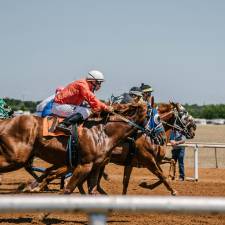
The advancements in data and content sharing are tremendously valuable for anyone who handicaps a horse race. The world of technology makes the availability of wagering on races, via phone or computer, a dream for the horse player who remembers the days of running to the track, finding a bookmaker or searching for other "creative" alternatives.
Handicapping tools and publications abound such as Timeform, Thoro-Graph and The Ragozin Sheets all compile data to help a horseplayer gain an edge against a less-informed public.
There are great places where you can find today's horse racing events so both the serious punter and occasional player can enjoy convenience and data from tracks around the world.
Although websites accurately capture information such as odds, changes and track conditions, there are factors in handicapping which cannot be measured. For example, a track bias. There are some tracks which on some days may favor a closer. Other days, a speed horse. Sometimes, horses from the inside win. Other days, there is a "dead rail."
So, one day a horse on a speed-favoring track wins easily. A bettor who follows the racing game closely may remember that particular day where speed won. If the next day, the track favors closers, the sharp bettor may look elsewhere. However, this "speed track" favoring data is not easily quantified.
Other data that can't be measured is a bad trip. Sure, we can read in a past performance if a horse was checked repeatedly or swung five wide in the stretch, but no quantifiable number can be assigned to a bad trip - whereby 10 would be an excellent trip on a "golden rail" and one would be checked and bouncing repeatedly off that same rail.
Jockeys play a critical factor too as he/she has a key role in the outcome of the race. There are no statistic for "bad rides" or controversial trips such as grabbing a speed horse or sending a closer early in the race. Likewise, a rating of a 10 would reflect a rider who has a Midas touch and chemistry with this horse while a rating of a one would reflect a ride that's rubbish.
Some data is measureable - but perhaps not necessarily accurate. For folks who have never been to the backside on a busy morning where scores of horses are training are truly missing out on one of the most beautiful experiences in this game. There are mornings where so many horses are training, there is an opportunity for confusion and inaccuracies are bound to happen. For example, if a horse has a published work for three furlongs in :38, one hopes that this is correct. But, having owned race horses where a timed work in the morning is sometimes different than a published work in the Form leads an owner to scratch their head. People wager on this published data, often trusting its accuracy.
Fortunately, there is a lot of data available and with social media there's great transparency. Bettors can look at the same set of data and interpret it differently. Many smart players watch for trends and pick their spots. But, when playing a multi-race pick and one leg is just a bit too tough, there's always the ALL button!
The Editorial Team of EquineInfoExchange.com
There are lots of informative articles in our section on Horse Racing.













